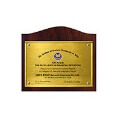

Does Salicylic Acid Help Treat Acne?
If you have ever looked into acne treatments, you have probably come across salicylic acid. Salicylic acid is a widely used component in acne treatments, especially effective for blackheads and whiteheads. It belongs to a group of compounds called beta-hydroxy acids (BHAs) and is naturally found in plants like willow bark. Salicylic acid functions by exfoliating the skin and breaking down the excess oil and dead skin cells that obstruct pores. This leads to fewer acne breakouts and smoother skin. But how exactly does it work, and do side effects occur when using salicylic acid for acne? Read on to know more.
How Salicylic Acid Helps Acne?
Acne develops when excess oil and dead skin cells clog the pores in the skin. Bacteria can also get trapped within the pores, resulting in inflammation and pus-filled acne lesions. Salicylic acid treats acne by clearing out these blocked pores. It achieves this by breaking apart the bonds between dead skin cells, allowing them to detach from the pore more easily, and by breaking down oils like sebum. Additionally, salicylic acid reduces the skin’s production of sebum, which leads to a decrease in breakouts.
Recommended Form and Dosage of Salicylic Acid for Acne?
Salicylic acid can be found in a range of over-the-counter (OTC) items as well as in prescription-strength treatments. Your physician or dermatologist will suggest a formulation and strength completely tailored to your specific skin type and current condition. They may also advise applying only a small quantity to a limited area of the affected skin for 2 or 3 days to observe your reaction before treating the entire area.
This remarkable plant-derived compound can also be utilised for addressing other conditions such as psoriasis, dandruff and more. It is available in various forms, including gels, lotions, soaps, serums, ointments, and cleansing pads, making it easy to incorporate into your skincare routine. Adults are advised to use a topical solution to address their acne, such as:
• Form: Ointment
Dosage: 3%
Frequency of application: As and when needed
• Form: Lotion
Dosage: 2%
Frequency of application: Twice or thrice a day
• Form: Gel
Dosage: Up to 7%
Frequency of application: Once a day
• Form: Soap
Dosage: 0.5% to 3%
Frequency of application: As needed
• Form: Solution
Dosage: 0.5% to 2%
Frequency of application: Up to three times a day
• Form: Pads
Dosage: 0.5% to 2%
Frequency of application: Up to three times a day
Salicylic acid is additionally utilised in greater concentrations as a peeling agent for the management of scars left by acne, melasma, age spots, freckles, etc.
Does Salicylic Acid Have Any Side Effects?
Salicylic acid is generally safe for a wide variety of skin types and works exceptionally well with other active ingredients such as niacinamide, hyaluronic acid and others. However, some side effects may occur for a few people. Some of the side effects of salicylic acid are listed below:
1. Skin irritation:
Individuals with dry or sensitive skin might notice dryness, redness and peeling.
2. Burning sensation:
If your skin is compromised or damaged, applying salicylic acid topically may cause a burning or stinging feeling. It's advisable to stop using the product if this sensation continues for an extended time.
3. Allergic reaction:
An allergy to salicylic acid could present itself in the form of intense redness, itching and burning. We suggest seeking advice from a board-certified dermatologist if these symptoms persist.
4. Impaired barrier:
Excessive use of salicylic acid can disrupt the lipid barrier, leading to significant dryness, flakiness, breakouts, inflammation and more.
Sun sensitivity:
The use of active ingredients like salicylic acid can increase your skin's sensitivity to sunlight, resulting in issues like burns, rashes and pigmentation changes.
Precautions Before Using Salicylic Acid
Be mindful of the following points prior to using salicylic acid:
• Allergies:
If you are allergic to salicylic acid or any other medication, inform your doctor.
• Drug interactions:
Generally, salicylic acid does not interact with most other drugs. However, you must get your doctor’s opinion before initiating a new drug.
• Pregnancy and breastfeeding:
Salicylic acid is deemed safe for use during pregnancy due to limited systemic absorption. If you are pregnant or nursing, please discuss this with your doctor before using salicylic acid.
Notify your doctor if you have any medical conditions related to your liver or kidneys. Additionally, inform them if you have had the flu, chickenpox or if you have diabetes.
In the initial days of using salicylic acid for acne treatment, your skin may experience dryness or irritation. To minimise this, start with a small application and gradually increase the amount as your skin adapts. Salicylic acid should not be applied to broken, red, swollen, itchy, irritated or infected skin.
Conclusion
Now that you know the salicylic acid uses for skin, it’s important to use it the right way. While generally safe for most skin types, it’s still a good idea to check with a dermatologist before starting any new skincare treatment. Using the correct amount can make a big difference in how well it works.
Some acne treatments can be costly, especially if they require regular use or prescription products. That’s why it’s smart to buy health insurance that covers skin treatments so you don’t have to worry about the financial burden while taking care of your skin.
One of the important components of our overall wellness is also being financially secured. Healthcare emergencies can happen any time, but a good health insurance policy can protect you from such uncertain situations. To know more about Wellness and other health related tips, visit the wellness corner.
Disclaimer: This blog provides general information and discussions about health and related subjects. The information and other content provided in this blog, website or any linked materials are not intended and should not be considered or used as a substitute for medical advice, diagnosis, or treatment. Kindly contact your doctor before starting a new medicine or health regime.
Related Articles
Managing and Preventing Teen Acne
How to Deal with Hormonal Acne?
10 Tips to Save Your Skin from Post-Workout Acne
Published on July 09, 2025















 Health Insurance
Health Insurance  Travel Insurance
Travel Insurance  Car Insurance
Car Insurance  Cyber Insurance
Cyber Insurance  Critical Illness Insurance
Critical Illness Insurance
 Pet Insurance
Pet Insurance
 Bike/Two Wheeler Insurance
Bike/Two Wheeler Insurance  Home Insurance
Home Insurance  Third Party Vehicle Ins.
Third Party Vehicle Ins.  Tractor Insurance
Tractor Insurance  Goods Carrying Vehicle Ins.
Goods Carrying Vehicle Ins.  Passenger Carrying Vehicle Ins.
Passenger Carrying Vehicle Ins.  Compulsory Personal Accident Insurance
Compulsory Personal Accident Insurance  Travel Insurance
Travel Insurance  Rural
Rural